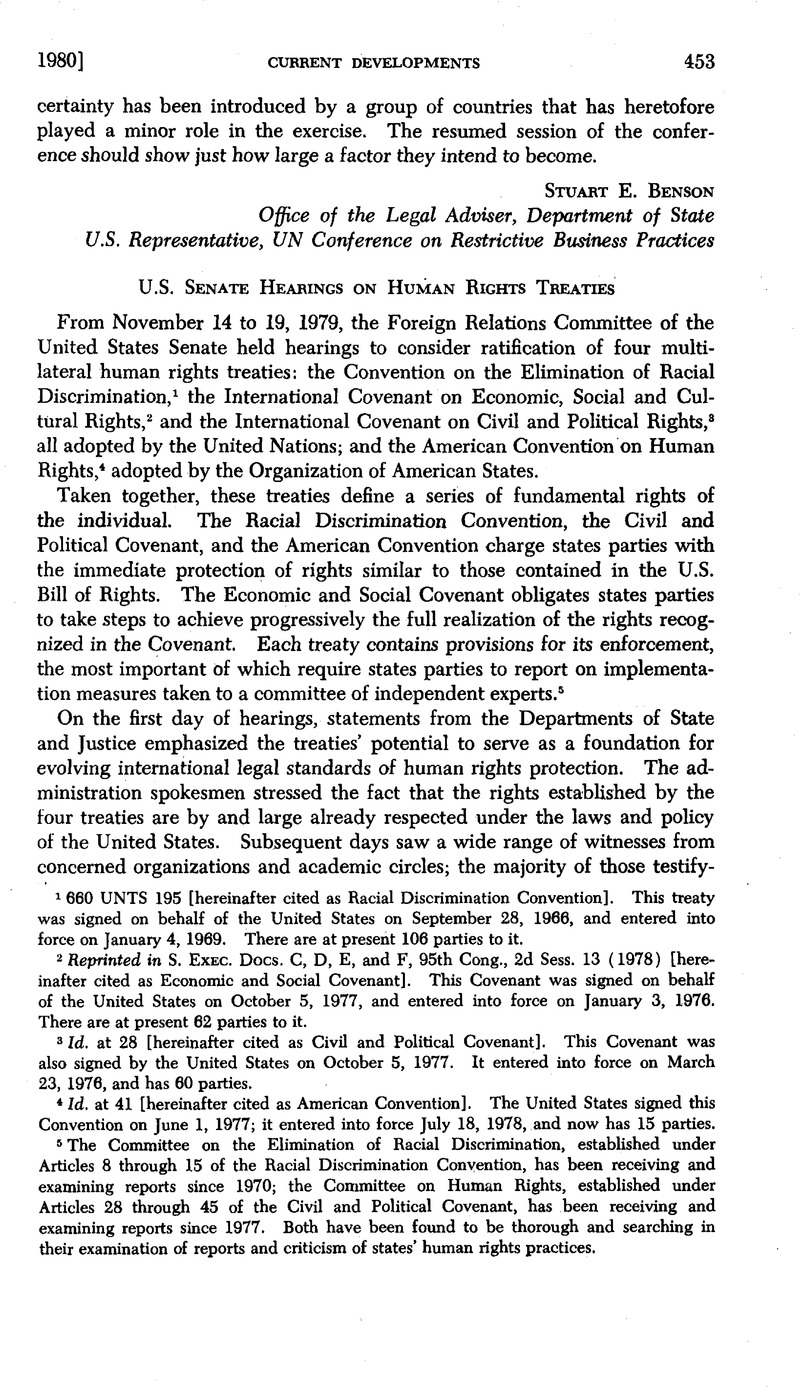No CrossRef data available.
Article contents
U.S. Senate Hearings on Human Rights Treaties
Published online by Cambridge University Press: 27 February 2017
Abstract

- Type
- Current Developments
- Information
- Copyright
- Copyright © American Society of International Law 1980
References
1 660 UNTS 195 [hereinafter cited as Racial Discrimination Convention]. This treaty was signed on behalf of the United States on September 28, 1966, and entered into force on January 4, 1969. There are at present 106 parties to it.
2 Reprinted inS. Exec. DOCS. C, D, E, and F, 95th Cong., 2d Sess. 13 (1978) [hereinaftercited as Economic and Social Covenant]. This Covenant was signed on behalfof the United States on October 5, 1977, and entered into force on January 3, 1976. There are at present 62 parties to it.
3 Id.at 28 [hereinafter cited as Civil and Political Covenant]. This Covenant was also signed by the United States on October 5, 1977. It entered into force on March 23, 1976, and has 60 parties.
4 Id.at 41 [hereinafter cited as American Convention]. The United States signed this Convention on June 1, 1977; it entered into force July 18, 1978, and now has 15 parties.
5 The Committee on the Elimination of Racial Discrimination, established under Articles 8 through 15 of the Racial Discrimination Convention, has been receiving and examining reports since 1970; the Committee on Human Rights, established under Articles 28 through 45 of the Civil and Political Covenant, has been receiving and examining reports since 1977. Both have been found to be thorough and searching in their examination of reports and criticism of states’ human rights practices.
6 Reprinted inS. Exec. DOCS. C, D, E, and F, note 2 supra,at v.
7 Included in those reservations, declarations, and understandings was a declaration that the treaties were to be non-self-executing; a federal-state reservation, to the effect that the United States obligates itself to implement only those provisions of the treaties over which the federal Government exercises jurisdiction as to subject matter; an understanding that everyone has the right to own private property; etc. Id.at vi-xv.
8 International Human Rights Treaties: Hearings Before the Senate Comm. on Foreign Relations,96th Cong., 1st Sess. (1979).


